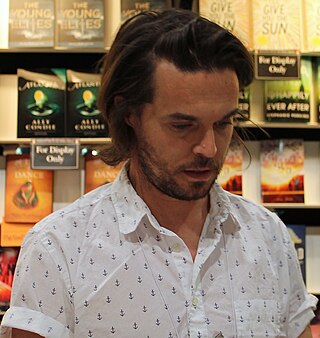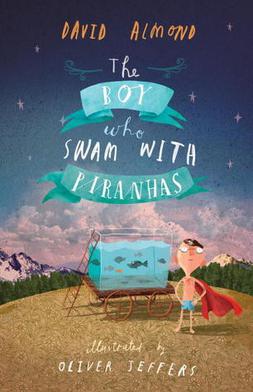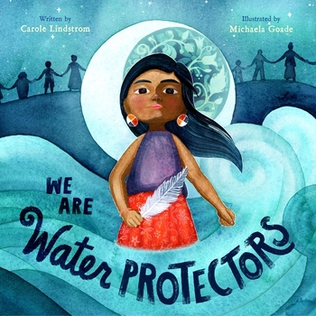John Clapp is a visual artist from the San Francisco Bay Area. He was educated at Art Center College of Design in Pasadena, California, and is a professor in the School of Art & Design at San Jose State University in San Jose, California.

Oliver Brendan Jeffers is a Northern Irish artist, illustrator and writer who now lives and works in Brooklyn. He went to the integrated secondary school Hazelwood College, then graduated from the University of Ulster in 2001.

Lost and Found is a children's picture book by Oliver Jeffers, published in 2005. It won the Nestlé Smarties Book Prize Gold Award and was the Blue Peter Book of the Year.
Sarah Gibb is an English illustrator and author, predominantly of children's books. Her best known books are adaptations of fairytales, both as an illustrator and an author.

The Lion & the Mouse is a 2009 nearly wordless picture book illustrated by Jerry Pinkney. The book, published by Little, Brown and Company, tells Aesop's fable of The Lion and the Mouse. In the story, a mouse's life is a spared by a lion. Later, after the lion is trapped, the mouse is able to set the lion free. Adapting the fable, with the moral that the weak can help the strong, as a wordless picture book was seen as a successful way of overcoming the brief plot generally found in the source stories. While it was Pinkney's first wordless picture book, it was not the first time he had told the story, having previously included it in his Aesop's Fables, published in 2000. Pinkney, who had received five Caldecott Honors, became the first African American to win the Caldecott Medal for his illustrations in the book. His illustrations were generally praised for their realism and sense of place. The cover illustrations, featuring the title characters but no text, drew particular praise.

Drew Daywalt, is an American author and filmmaker. He is best known for writing the best-selling children's picture book The Day the Crayons Quit, and its sequel The Day the Crayons Came Home, both illustrated by Oliver Jeffers. Daywalt is also known for writing scripts for American television and Hollywood studio films, and for creating a number of short horror films for release on the internet.

The Boy Who Swam with Piranhas is a 2012 book by David Almond. It is about a boy, Stanley, who runs away from home and joins the circus.

Albidaro and the Mischievous Dream is a 2000 book by Julius Lester and illustrator Jerry Pinkney telling why teddy bears look as if they have a secret.

Marlon Bundo's A Day in the Life of the Vice President is a 2018 children's book by Charlotte Pence as author and Karen Pence as illustrator. It details a fictional day in the life of Marlon Bundo, pet rabbit of Vice President of the United States Mike Pence, father of Charlotte and husband of Karen. It received lukewarm reviews from professional critics, who praised the illustrations but found fault with the prose.
Morag Hood is a Scottish writer and illustrator of children's books. Her primary medium is lino printing, although she uses a variety of techniques in her work. Her stories rely on interplay between text and illustration, creating space in the narrative for young readers to fill in. Many of her stories concern relationships, inclusion and prejudice. She has an MA in children's book illustration from the Cambridge School of Art. Hood was the winner of the UKLA book awards in the 3–6 category in 2018, for Colin and Lee, Carrot and Pea, and in 2019 for I am Bat. Her books have been nominated for several other awards, including the Kate Greenaway Medal in 2017, 2018 and 2019.

The Imaginary is a 2014 British children's novel written by A. F. Harrold and illustrated by Emily Gravett. It is about a small girl, Amanda, and her imaginary friend, Rudger. An anime film adaptation by Studio Ponoc has been announced. Initially set for a Q3 2022 release, it was later delayed to Q1 2023 due to production issues.

Boy 87 is a contemporary novel by Ele Fountain. The refugee crisis is one of the themes in this novel. It is published by Pushkin Children's Books in the UK and by Little Brown in the US. The book was written while the author was living in Ethiopia.
Lisa Thompson is an English children's book author.

Julián Is a Mermaid is an American children's picture book by Jessica Love. It tells the story of a boy who wants to become a mermaid and participate in the Coney Island Mermaid Parade. Love first began writing the book in 2014 while she worked as an actress, and it was published in 2018 by Candlewick Press.

We Are Water Protectors is a 2020 picture book written by Carole Lindstrom and illustrated by Michaela Goade. Written in response to the Dakota Access Pipeline protests, the book tells the story of an Ojibwe girl who fights against an oil pipeline in an effort to protect the water supply of her people. It was published by Roaring Brook Press on March 17, 2020. The book was well received. Critics praised its message of environmental justice, its depiction of diversity, and the watercolor illustrations, for which Goade won the 2021 Caldecott Medal, becoming the first Indigenous recipient of the award. The book also received the 2021 Jane Addams Children's Book Award winner in the Books for Younger Children category.

Timeline: A Visual History of Our World is a children's picture book by Belgian author Peter Goes that was published by Gecko Press in 2015. It illustrates the timeline of the world's events from the prehistoric eras to the present, spanning the Big Bang theory, Medieval Europe, civilizations, and the 2010s.

Birdsong is a 2019 children's picture book written and illustrated by Julie Flett. The book follows the story of a young indigenous girl named Katherena, who moves to a countryside home with her mother. Lonely in her new home at first, Katherena develops a friendship with her elderly neighbor, Agnes. The book explores the intergenerational relationship between them. The pages were illustrated with pastel and pencil colours.

Seven Blind Mice is a children's picture book written and illustrated by Ed Young. Based on the Indian fable of the blind men and an elephant, the book tells the story of seven mice who, each day, explore and describe a different part of the elephant. It was well received by critics and received a Caldecott Honor for its illustrations.
Heartstopper is an ongoing young adult LGBTQ+ graphic novel and webcomic series written and illustrated by British author Alice Oseman. It follows the lives of Nick Nelson and Charlie Spring as they meet and fall in love. The series is an expanded adaptation of Oseman's 2015 novella, Nick and Charlie, although the characters originally appeared in her 2014 novel Solitaire.

Going Down Home with Daddy is a 2019 picture book written by Kelly Starling Lyons and illustrated by Daniel Minter. It tells the story of a young boy who attends a large family reunion at his great-grandmother's house and struggles to prepare a contribution to the family celebration. Inspired by Lyons's visit to a family gathering in rural Georgia, the book was published by Peachtree Publishing on April 1, 2019. The acrylic illustrations incorporate Adinkra symbols representing various concepts in Ghanaian culture. Critics praised the book's themes of family culture and heritage as well as Minter's illustrations, for which it received a Caldecott Honor in 2020. It also received the 2019 Lupine Award in the Picture Book category.















